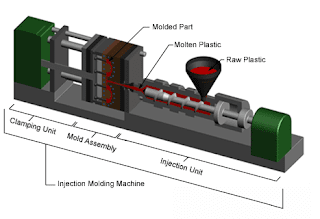Packaging is important and common either in the work or our daily lives. It’s so common that, to some degree, we are even not aware of its existence. It just seems to be an inherent part of everything.
Packaging involves a very wide range. There are many types of packaging in terms of material, packaging method, and purpose.
1. To categorize by material
Nowadays, so many materials have been used in packaging, such as paper, plastic, metal, glass, wood, linen, cloth, bamboo, rattan and grass, among others.
(1) Paper materials.
Common paper materials for packaging include honeycomb paper, kraft paper, coated paper, corrugated cardboard, chipboard, paper core, paper tubes, etc.
(2) Plastic materials.
PP/PET strapping band, PP split film rope, wrapping Film, sealing tape, heat shrinkable film, plastic film, hollow board, etc.
(3) Composite flexible materials.
Flexible packaging, aluminized film, iron core wire, aluminum foil composite film, vacuum aluminized paper, composite film, composite paper, BOPP, and so on.
(4) Metal materials:
tinplate, aluminum foil, barrel hoop, steel belt, packing buckle, aluminum blister, PTP aluminum foil, aluminum plate, steel buckle;
(5) Ceramic materials.
Ceramic bottles, ceramic cylinders, ceramic jars, ceramic pots
(6) Glass materials.
Glass packaging includes glass bottles, glass jars, glass boxes, etc.
(7) Wood materials.
Wooden packaging is made of wood products and artificial wood plates (like plywood, fiberboard), such as wooden boxes, wooden barrels, wooden cases, fiberboard boxes, plywood pallets, and wooden trays, etc.
2. By purpose of packaging
Packaging is not created equal. Broadly speaking, there are two types in terms of purpose: industrial packaging and commercial packaging.
(1) Industrial packaging
It function as a protection means in transportation, storage, and circulation, etc. It’s to business. Terms include shipping boxes, moving boxes, crates, pallets, etc. (2) Commercial packaging
It plays a promotional or advertising function. It’s to consumers. Such packaging is basically the retail or gift boxes, those are parts of daily lives. 3. By packaging form
It is divided into individual packaging, inner packaging and outer packaging;
4. By packaging method
It is categorized into waterproof / moisture-proof packaging, high barrier packaging, anti-rust packaging, anti-static packaging, water-soluble packaging, anti-ultraviolet packaging, vacuum packaging, anti-insect packaging, cushion packaging, EPS, anti-bacterial packaging, anti-counterfeiting packaging, tamper-proof packaging, nitrogen gas filled packaging, deaeration packaging, etc.
5. By packaging contents
This maybe is the most familiar categorization to common citizens. And such categorization involves the least jargon. There are food packaging, machine packaging, pharmaceutical packaging, cosmetics packaging, clothes packaging, chemical packaging, electronics packaging, military supplies packaging, etc., like watch holders. Food packaging can be further categorized as beverage, fruit, cake, tea, meat, snacks and so on, such as candy boxes. 6. By degree of rigidness
Packaging includes rigid, flexible and semi-rigid packaging according to the degree of rigidness.
(1) Rigid packaging.
A rigid box is shipped as it is, and not easy to deform(also called setup box). (2) Flexible or soft packaging
It refers to those containers whose shapes can be changed after filling or taking out the contents. An easy example of this is the stand-up pouch. (3) Semi-rigid packaging
It falls between rigid and flexible. Corrugated cardboard boxes, folding boxes, lightweight plastic containers and plastic hoses, etc. are all semi-rigid packaging.











